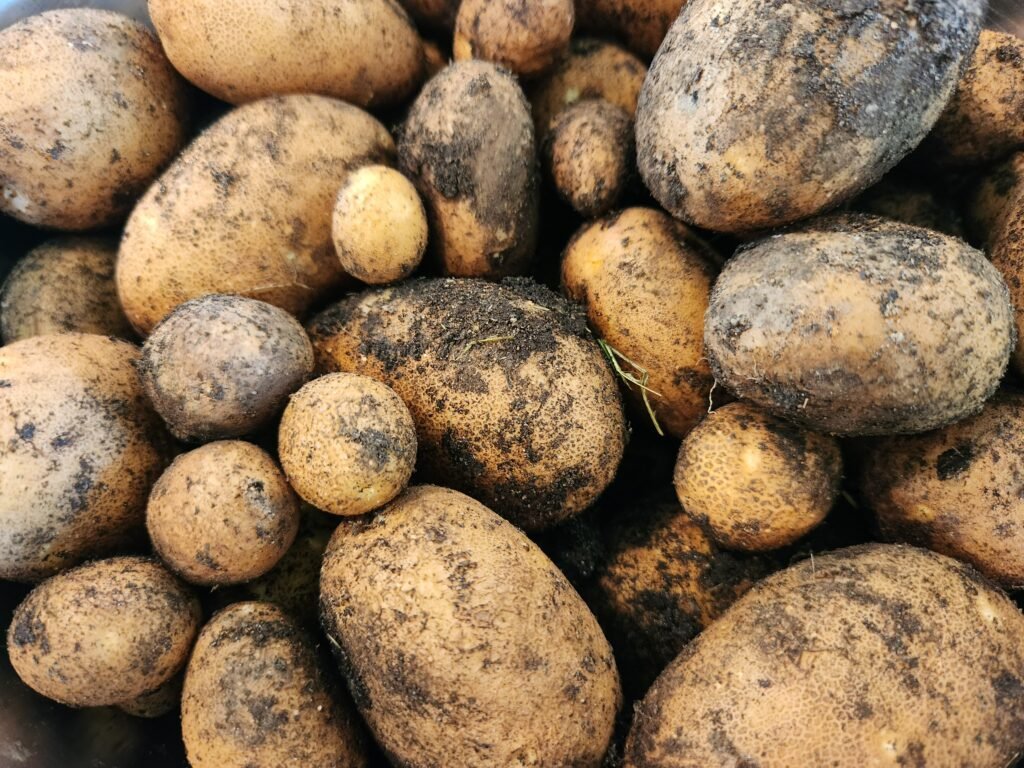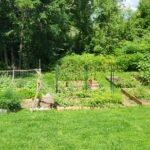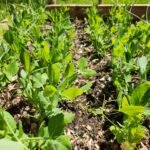We love fresh potatoes. When we were growing potatoes for the first time we hoped they would be similar to the potatoes we buy from the grocery store. We had no idea what we were in store for. Fresh potatoes are now one of our very favourite things to eat.
This post contains affiliate links. If you use these links to buy something we may earn a commission. Thanks.
The first thing we noticed that was different between a fresh potato and a store bought potato is the firmness. We thought store bought potatoes were firm and crisp but they pale in comparison to fresh. We look forward to potato harvest season every year. In this article we’ll run you through the basics you will need to grow potatoes of your very own.
What Kind Of Potato Can You Grow?
This can be both a long and short answer. Today, lets stick to the short answer. Basically any variety you want. There are many different kinds of potatoes, and all of them you can grow. If you live anywhere where the growing season is longer than 90 days you don’t need to worry about the variety so much. Pick the kind of potato you like to eat and grow that one.
What Is A Potato Seed?
There is such a thing as a potato seed, but that’s not what you want in order to grow potatoes. Not that you can’t do it but rather it’s the less conventional way of growing potatoes.
Typically people talk about “seed potatoes” instead of “potato seeds”. Seed potatoes are any potato that has started to grow. I’m sure everyone at one point or another bought a bag of potatoes only for them to be mushy and growing vines when you went to use them for mashed potatoes one night for dinner.
Those mushy potatoes with roots growing out of them are your seed potatoes. Those can be planted into the ground and in a few month your mushy potato will turn into a bunch of fresh crisp new potatoes.
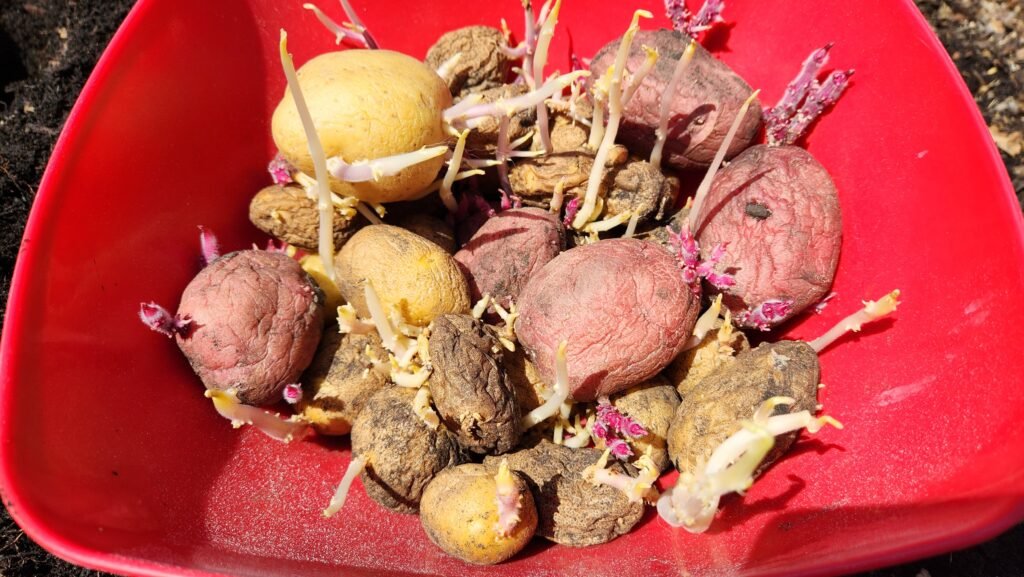
How Do You Plant A Seed Potato?
Potatoes can be grown in anything from a potato bag, directly in the ground or in a raised garden bed. Potatoes are in our opinion the easiest plant to start. All a potato needs is enough dirt. What is enough dirt you might ask? At least 1 cubic foot.
The potato plant needs enough space to grow strong roots and have the space to form the potatoes. Obviously the more room the plants have the better. If potatoes aren’t given enough space or are planted to close together the potatoes could get internal bruises and your whole crop could be ruined.
To plant a seed potato, dig a hole or trench depending on the size of your garden. The hole need to be almost to the bottom of the garden bed. Potatoes don’t mind what pH level the soil is so much but will grow best in soils between 6 and 6.5. We use this soil tester to make sure we keep our soil optimized.
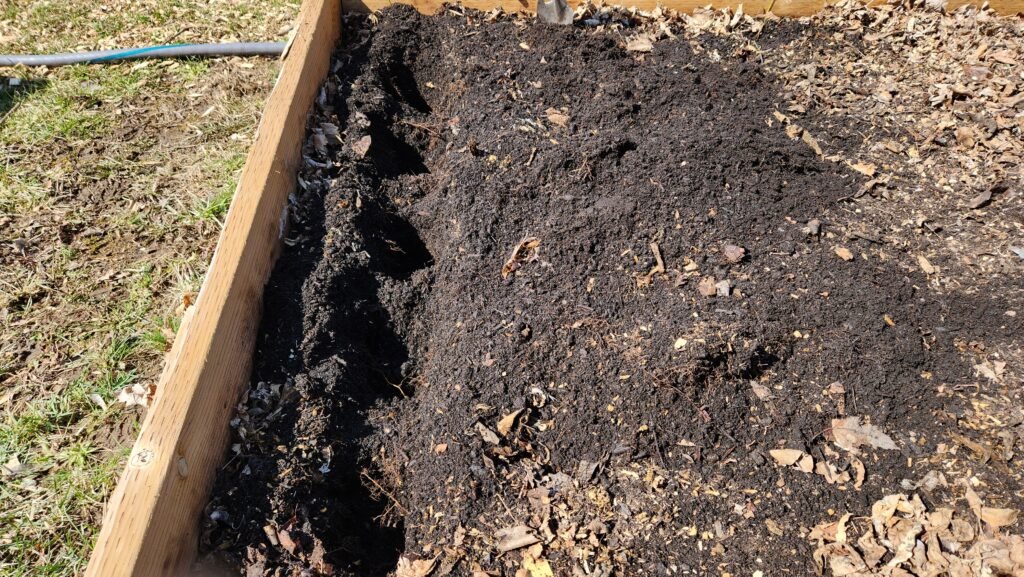
Place your seed potatoes at the bottom of your hole and cover with about 3 inches of soil. That’s it. You’ve now planted yourself some potatoes.
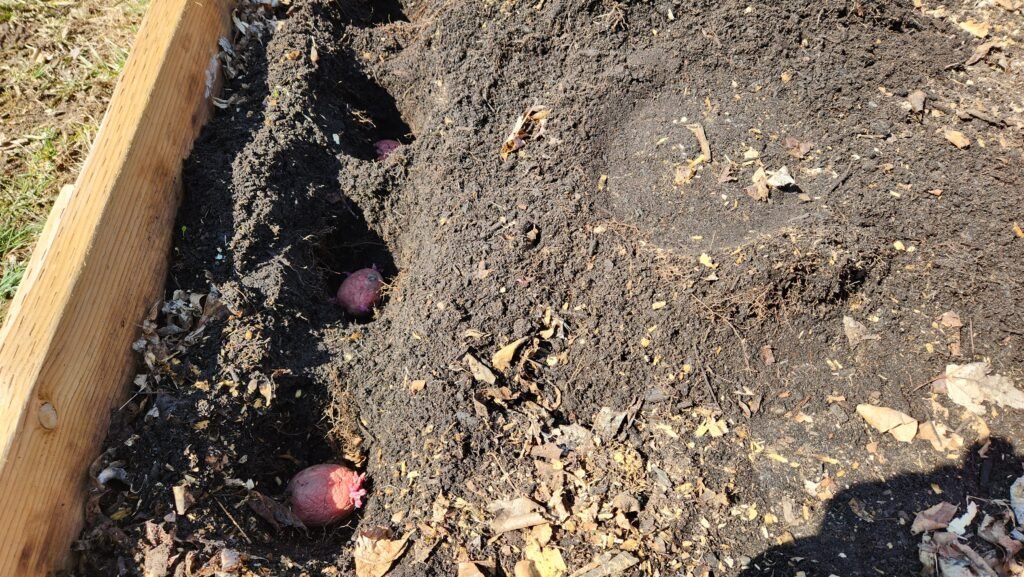

When Can You Plant Potatoes?
Potatoes are generally planted in the spring when the soil temperature get above 40ºF, 4ºC. That is normally between 2 and 4 weeks before the last frost date in your area. For us in zone 5b that is the middle of April.
Can You Double Crop Potatoes?
Yes you can. If you’re not overly concerned with the size of your potatoes, most potato varieties are ready to harvest in about 75 days. The longer they stay in the ground the more likely you are to get larger potatoes. But, even in zone 5 where we are, you could plant your first crop in April. Harvest those in July, and immediately plant a new crop of potatoes to be harvest in October.
Caring For Your Growing Potatoes:
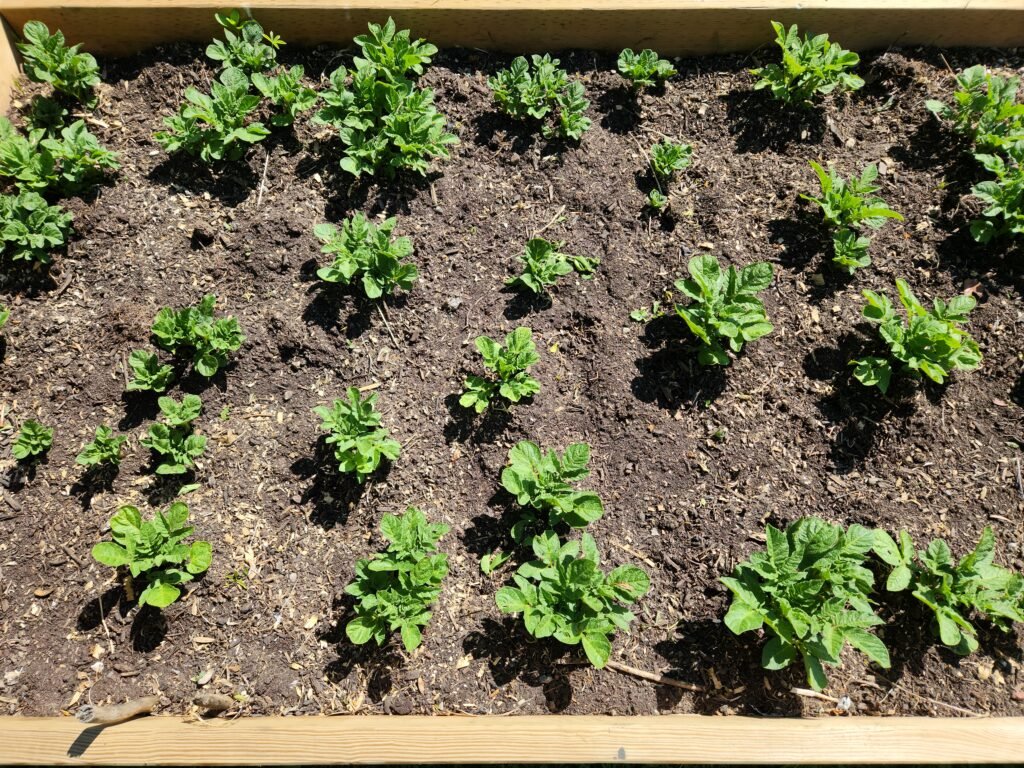
Potatoes are also a fairly easy crop to maintain compared to some others. There are a few basic needs and some things you can do to get a better crop yield so we’ll go over them now.
Watering:
Potatoes require a healthy amount of water once the plant has been established and the leaves have broken through the surface. Give your potato plants about 2 inches of water per week. Water is especially important once the plant begins to flower.
Hilling:
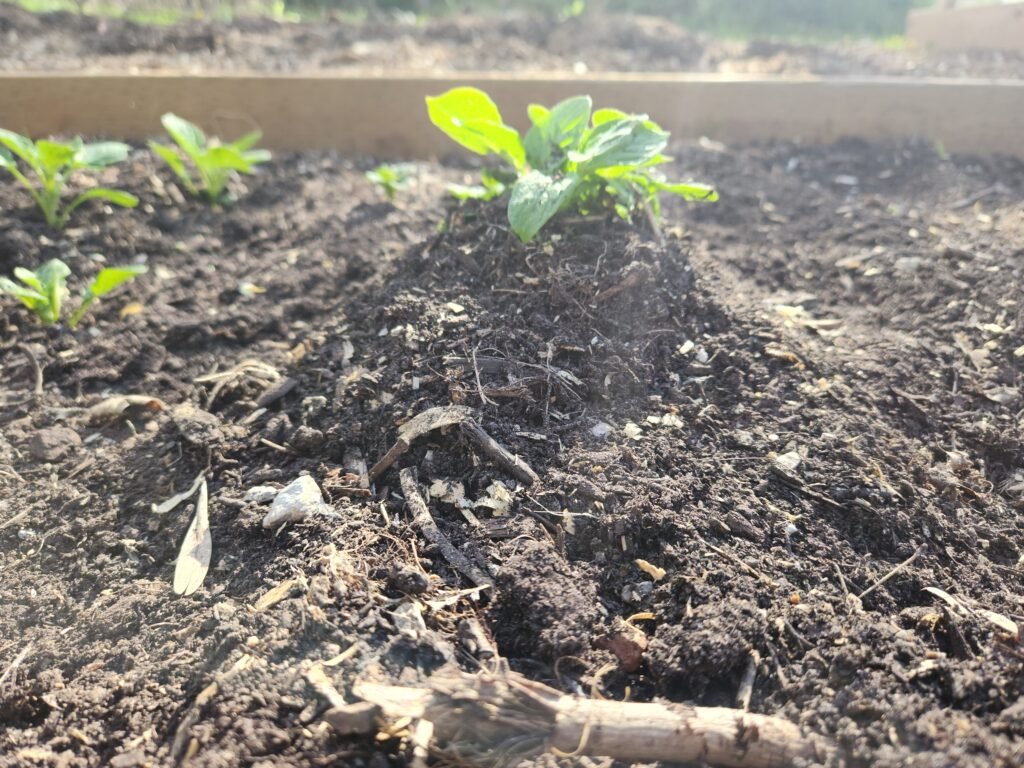
Hilling a potato plant is way to try to increase the yield of your crop. When the plant has been established and the leaves are above ground either add more soil or use the existing soil around the plant and gently raise the soil level around the plant stem. This will encourage more root development and give more opportunities for more potatoes to start to grow.
Mulching:
Mulching your potatoes is very important in a home garden setting. It will help lock in moisture to prevent the need for watering as frequently. Cut down weed seeds from germinating. As well as preventing any potatoes near the surface of the soil from turning green from sunlight. You can find more in depth mulching knowledge on our how to mulch your garden article.
Common Potato Pests:
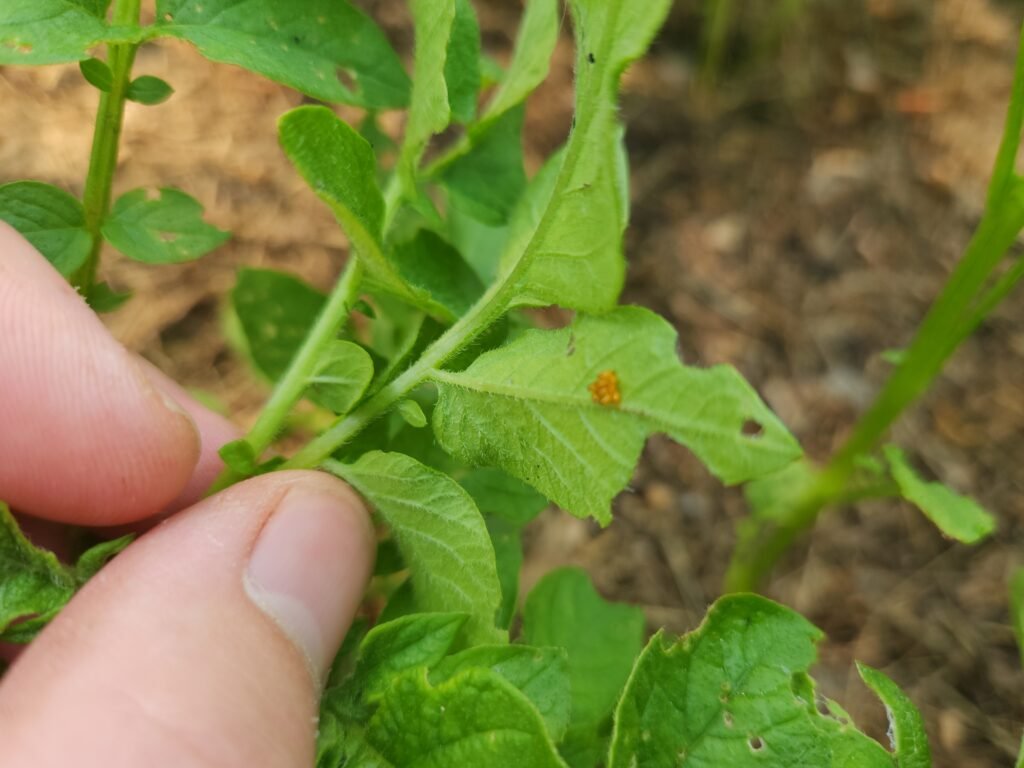
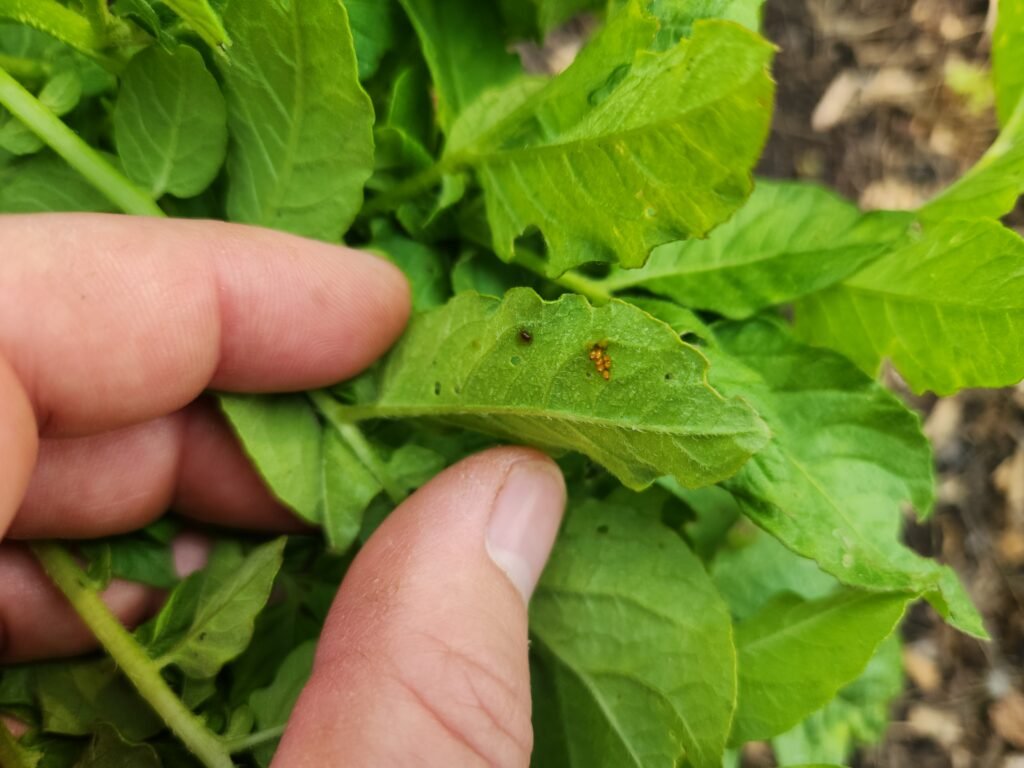
The Potato Beetle: The black and yellow striped potato beetle is by far the most prevalent pest you need to look out for on your potato plants. Both the larvae and adults feed on the potato plant leaves and if left unchecked they can decimate your entire crop. They can be removed by hand, which is what we do, but that could become difficult if you have a large garden.
When Can You Harvest Potatoes:
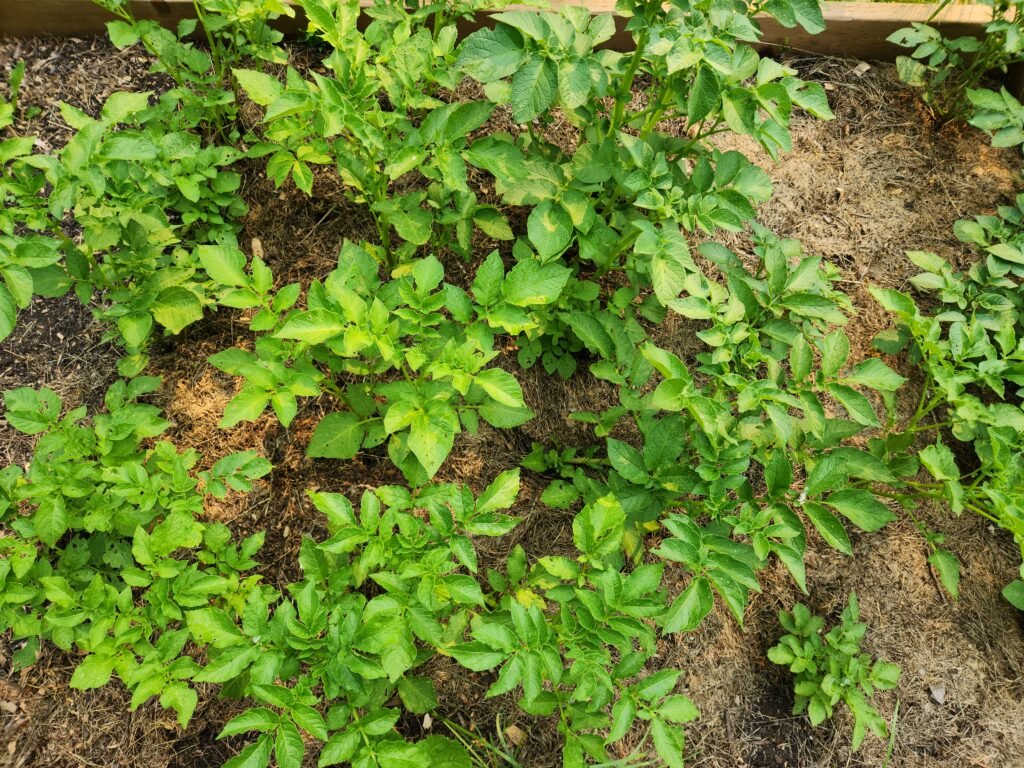
Some varieties of potatoes can be harvested in as little as 10-12 weeks. If you haven’t bought a specific type of potato to grow and aren’t quite sure when they will be ready, it’s better to wait until the foliage has died back.
This can take anywhere from 3 months up to 6 months. To harvest the potatoes use your hands to dig through the soil if it is easy enough, otherwise use a shovel or pitch fork and dig down 1 foot from the base of the plant. Lift all of the dirt and the plant out of the ground and sort through for your potatoes.
Frequently Asked Questions (FAQ) About Growing Potatoes
A: Choose certified seed potatoes (disease-free) and varieties suited for your climate. Early or mid-season types tend to work well with simpler methods. If you live in a shorter growing season, pick “early” varieties so you still get a harvest before frost.
A: If the seed potatoes are large, you can cut them into pieces, each with at least one “eye.” Let the cut surfaces “heal” (dry out) for a day or two to reduce risk of rot before planting. If the pieces are small (golf-ball size or smaller), you can plant them whole.
A: Plant them in spring when the soil is workable and has warmed somewhat. Typically this is a few weeks before the last frost once soil is above ~ 45°F (≈ 7°C). If planted too early in cold, wet soil, you risk rot and delayed sprouting.
A: Good spacing helps ensure enough room for the tubers and airflow around plants. For many varieties, spacing seed pieces about 6-8 inches apart in a row, with rows spaced apart enough (or between container plants) is common.
A: Potatoes need full sun (at least 6 hours, more is better). For water: maintain consistent moisture, especially once plants start to flower and tubers begin forming. About 1 inch of water per week is a general target; more may be needed in sandy soils or very hot/dry weather. Avoid letting soil dry out completely or become waterlogged.
A: Store in a cool (but not freezing), dark, dry place with good air circulation. Avoid light so they don’t turn green. Don’t wash until you’re ready to use them. Damaged potatoes should be removed or used first as they can rot. Proper curing helps extend storage life.
Conclusion:
So there you have it, folks. Our quick and dirty guide to growing potatoes. With a little bit of patience, some TLC, and the right conditions, you’ll have a bountiful harvest in no time.
We hope you enjoyed this potato growing guide. If you did make sure you check out the other growing guides, seed saving guides and our recipes. We are growing our website with more articles all the time, and we invite you to grow with us. If you have any questions about potatoes or would like to share some of your knowledge with us please leave a comment below.

